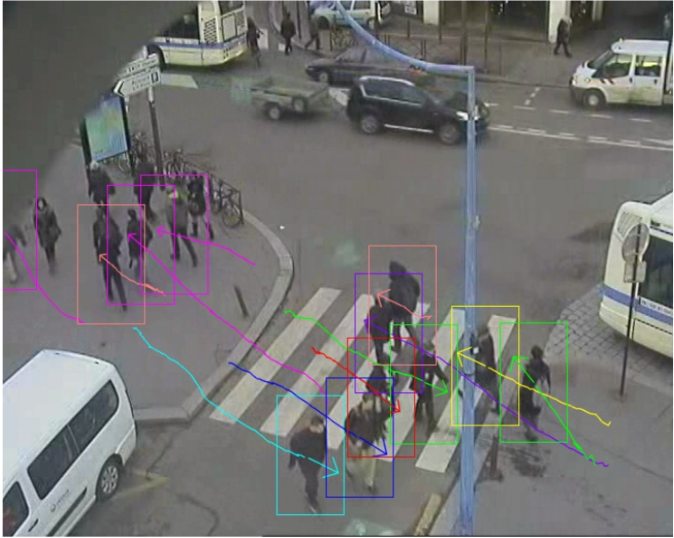Section: New Software and Platforms
Detection and Tracking of Pedestrians in INRETS Intelligent Urban Spaces Platform
Participants : Claudine Combe, James Crowley [correspondant] , Lukas Rummelhard.
Visual detection and tracking of pedestrians, Intelligent Urban Space
The project ANR-07-TSFA-009-01 CIPEBUS ("Carrefour Intelligent - Pole d'Echange - Bus) has been proposed by INRETS-IFSTTAR, in collaboration with Inria, Citilog, Fareco, and the city of Versaille. The Objective of the CIPEBUS project is to develop an experimental platform for observing activity in a network of urban streets in order to experiment with techniques for optimizing circulation by context aware control of traffic lights.
Within CipeBus, Inria has developed a real time multi-camera computer vision system to detect and track people using a network of surveillance cameras. The CipeBus combines real time pedestrian detection with 2D and 3D Bayesian tracking to record the current position and trajectory of pedestrians in an urban environment under natural view conditions. The system extends the sliding window approach to use a half-octave Gaussian Pyramid to explore hypotheses of pedestrians at different positions and scales. A cascade classifier is used to determine the probability that a pedestrian can be found at a particular position and scale. Detected pedestrians are then tracked using a particle filter.
The resulting software system has been installed and tested at the INRETS CipeBus platform and is currently used for experiments in controlling the traffic lights to optimize the flow of pedertrians and public transportation while minimizing the delay imposed on private automobiles.


